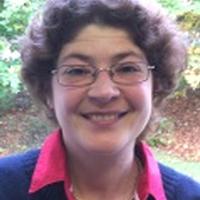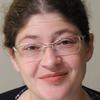For my forthcoming book Learning, Migration and Intergenerational Relations I conducted fieldwork between November 2013 and January 2014 in Chiang Mai, Thailand. I stayed there for six weeks to revisit some sites where I have been conducting intermittent fieldwork since 2006. In particular, for my doctoral fieldwork I spent a total of 12 months between 2007 and 2009 in a Thai Karen village in the highlands of northern Thailand. This research explored the role of migration for education and work during childhood and youth transitions. In light of the forthcoming book publication, it was meaningful to revisit families and communities to better understand how their lives have developed, in particular in regards to marriage and childbearing. Although many former research participants were by then adults and migrated to other parts of Thailand for work, I was able to catch up with several research participants – some of whom recently married and gave birth to their first child. It was a joy to meet them and to be allowed to be part of their lives once more.
In particular, I explored the role of intergenerational relations, especially how changing modes of production and learning affect multigenerational households. Traditionally, the Karen live in martrilocal households, i.e. when a woman marries, her husband moves into her village. They newly-wed couple usually stayed for a while with the brides’ parents until they were able to move into their own house, preferably on the same ground or very close by to the house of the brides’ mothers’ house. Eldest daughters, in particular, had traditionally the duty to be close to their ageing parents. Multigenerational households still exist.
However, as the economy changes, so change traditional patterns of household formation in rural and urban Thailand. According to my ethnographic sample, young people today migrate increasingly for work and education out of the village. They remain in contact with their rural homes, often through weekly or monthly visits and remittances. Care for the elderly is mostly done privately at home. However, the villagers also receive a very modest pension from the Royal Thai Government.
Migration for work and education also seems to affects patterns of childbearing among the Karen. Whilst in the past numerous children were considered a blessing, young couples today say they do not want to have more than two or three children. The say it is because of the rising costs of living expenses, even in rural areas. Because increasing numbers of women find paid work, one sees men remaining at home and caring for babies.
Rural development and improved health services shape antenatal, pregnancy and post-natal care. Meeting one friend (who gave birth to her first child a few days before we met) I learned that her experience of pregnancy and childbirth was quite different than her mother’s or grandmother’s experiences. Whilst previous generations gave birth at home with a traditional birth attendant, my friend gave birth in a local clinic. She felt well cared for, but was also happy to return home after a few days. Swaddling seems to be a typical practice for the Karen culture.
During this fieldwork, I also met with Karen refugees from Burma (Myanmar). Over Christmas 2013, I visited Mae La refugee camp in Thailand, and Etuta, a village for internally displaced people in Burma (Myanmar). Care for the new-born is a priority concern in camps (see photo).
Visit to the Karen refugee camp in Thailand, 24 December 2013

In this respect, I consulted with Professor Rose McGready (Nuffield Department of Medicine, Centre for Tropical Medicine and Global Health, Shoklo Malaria Research Unit SMRU) who has been working as an obstetrician for twenty years in Thailand. She trained two waves of refugees arriving from Burma in Thailand to become medical staff. Antenatal care in the camps includes ultrasound. In the past there was high infant mortality, but today, doctors and nurses are also providing family planning education. When asked about their desired number of children, Karen people in the camps typically say they want to have three children, but most families have more than three children. According to Professor McGready, the Karen who come to her clinic say they find ‘the calendar method’ difficult and prefer injections which they can use actively by themselves at home. They find it easy to take medication, because there exists a strong believe that pills can help prevent disease, like malaria.
Teenage pregnancy often leads to so called ‘shot-weddings’ where a man and a woman marry in a rush before the birth of the child. Bioethical questions in regards to childbearing arise in refugee camps. For example, a woman who was already mother of six children found herself pregnant again. Her husband died within the first three months of the pregnancy. The question arose whether this woman should have the baby or not. 1/5 of the people asked suggested an abortion, whilst the others insisted the woman should give birth to the baby.
In my own process of data generation, I met a group of 18 young Karen refugees who participated in an educational programme run by the Jesuit Order in Chiang Mai. In participatory research exercises refugee youth narrated their lives through drawings. Thanks to my expertise in participatory research methods, it was not difficult to arrange for research session in collaboration with my academic host at Chiang Mai University and the Jesuit priests at the Seven Fountains Centre, Chiang Mai, who provided transport and translators, as well as space for data generation, data storage and data analysis. Findings from this small-scale qualitative research highlight the role of education in shaping young peoples’ aspirations for marriage and childbearing (see figure 1).
Figure 1: Loo Shwe's life course line
.jpg)
Loo Shwe was born in 1990. In 1997 he started primary school in his village. In 1998 the Burmese soldiers came to his village and he and his family had to fly into the deep jungle. He lost two siblings in one week: ‘my family fulfil of broken heart because my brothers and sister fly to heaven at the same time.’ The family ran out of rice and decided to cross the border into Thailand where they found shelter in Ban Mae Surin camp, Mae Hong Son Province. After one month the family moved on to Mae La Oon camp, Tak Province. There Loo Shwe finished high school. During this time he also had is first girlfriend. In 2013, at the age of 23, he left the refugee camp for local integration in Huay Tong. He hopes to attend university and then he wants to marry and return to the Karen state in Burma to help his parents and have many children. With his university education, Loo Shwe wants to develop his country, city and people. He hopes that he ‘will become Karen President and help my poor Karen people as much possible’.
This small-scale qualitative research suggested that overall research participants aspire to continue their education, to marry, to have children even though they are currently living as refugees in a post-conflict situation. They planned to postpone child bearing until after they have attained their educational aspirations. Their planning is deliberate and their choices are not accidental. The experience of poverty and forced migration informs their aspirations for education and family life.
Of course, establishing general conclusions from this small sample size would be imprudent. Nevertheless, the qualitative data has value in itself it draws attention to the texture of young peoples’ lives. Young peoples’ drawings emphasize the importance for us to understand childbearing and marriage decisions within the socio-cultural and political economic context of individual life courses and communal events. More research is needed to understand how socio-cultural and political-economic developments shape patterns of childbearing and family life around the world.
About the Author:
Dr Pia Jolliffe is a Collen Visiting Fellow at the Oxford Institute of Population Ageing.
Opinions of the blogger is their own and not endorsed by the Institute
Comments Welcome: We welcome your comments on this or any of the Institute's blog posts. Please feel free to email comments to be posted on your behalf to administrator@ageing.ox.ac.uk or use the Disqus facility linked below.













